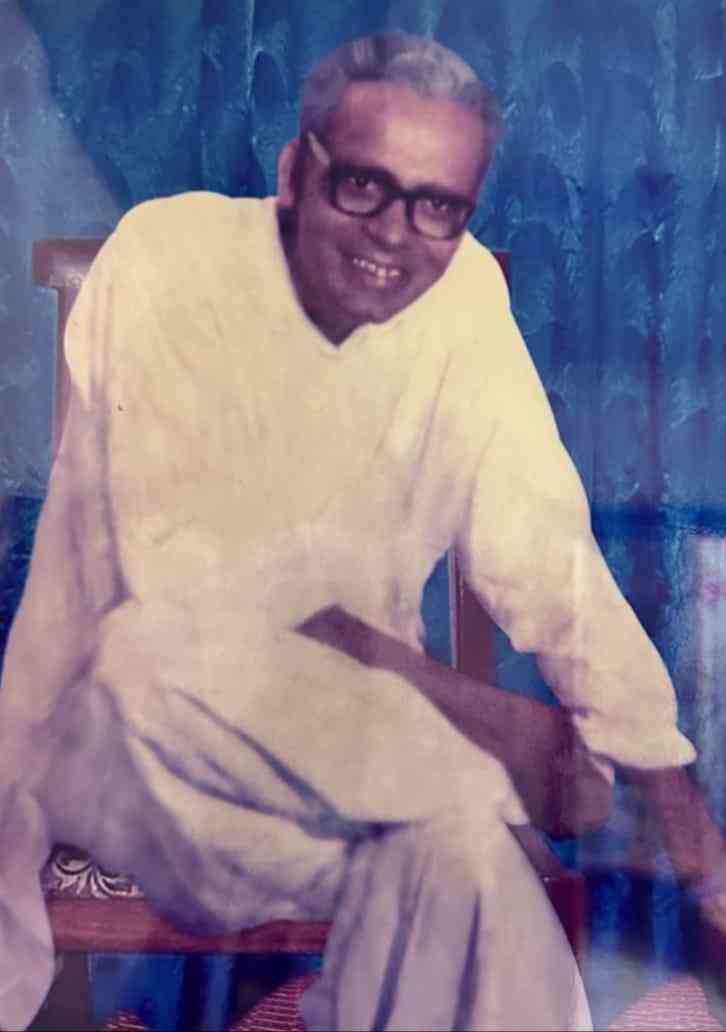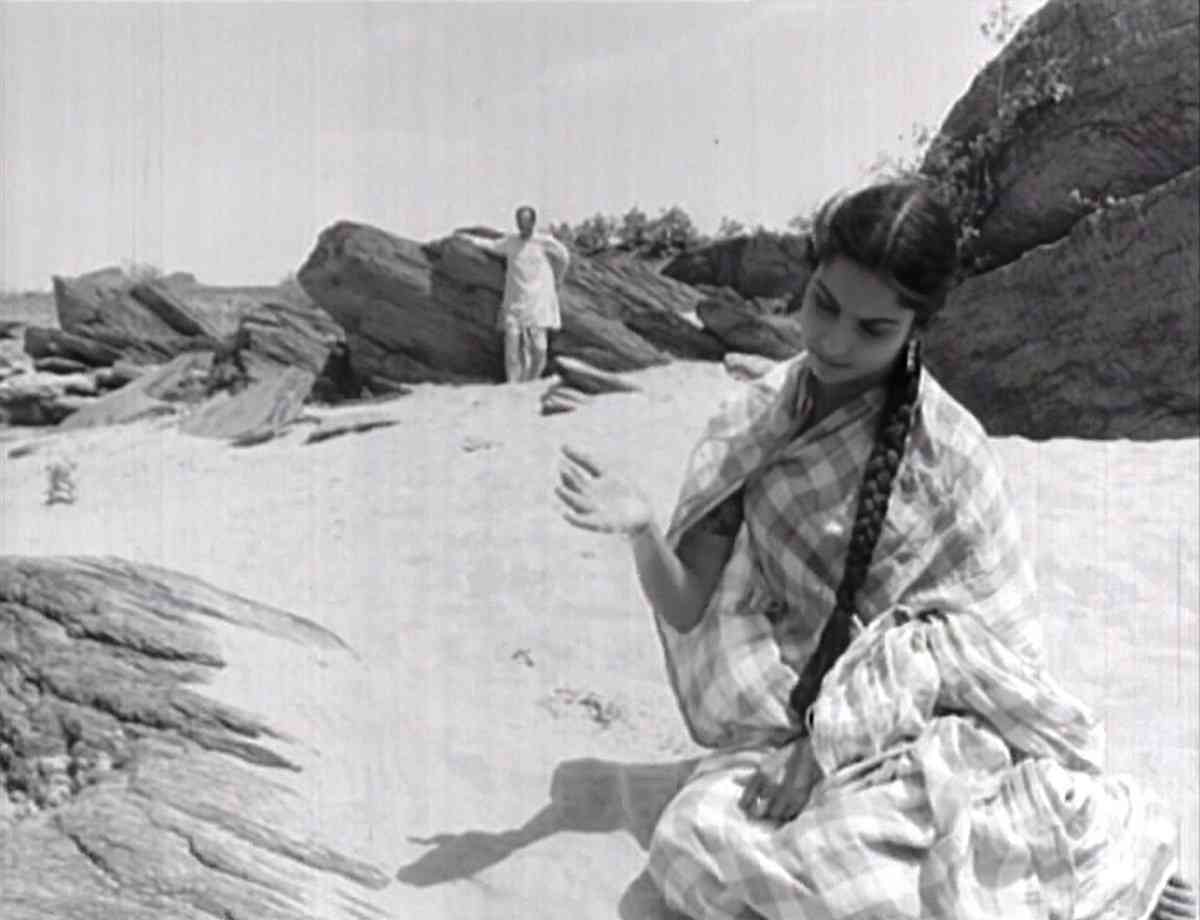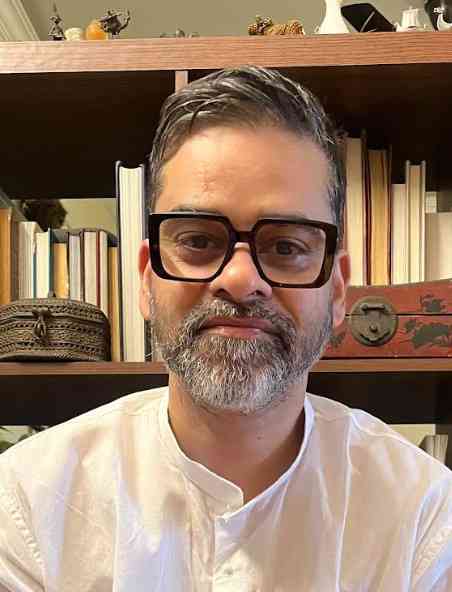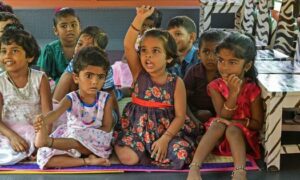
Relatives, friends, collaborators, filmmakers, admirers, scholars and Ritwik Ghatak himself. An engrossing anthology of 50 essays released to celebrate the Bengali iconoclast’s birth centenary on November 4 thrums with voices and views, a bit like the title of Ghatak’s final film Jukti Takko Aar Gappo (Reason, Debate and a Story) in 1974.
Unmechanical – Ritwik Ghatak In 50 Fragments (Westland Books), edited by Shamya Dasgupta, has new articles, archival writings, interviews, rare photographs, poems and illustrations inspired by Ghatak’s movies.
One section features Ghatak’s views on cinema and art. In an interview from the 1960s, Ghatak spoke of why he made films: “For the people. What else is there but people? The last word in all art is the people.”
Ghatak died in 1976, at the age of 50. He directed eight features and several documentaries and shorts. There were unfinished features too – the unrealised dreams of a communist maverick whose life was marked by frenetic intellectual activity, domestic turmoil, alcoholism and the lingering trauma of the partition of Bengal in 1947.
Ghatak’s films, including Ajantrik (1958), Meghe Dhaka Tara (1960), Komal Gandhar (1961) Subarnarekha (1965) and Titas Ektir Nadir Naam (1973), were not properly understood in their time or accorded the acclaim they enjoy today. Yet, Ghatak’s legacy has endured through admirers of his epic tales of dispossession, ideological ferment and the realities of post-Partition Bengal.
A teaching stint at the Film and Television Institute of India in 1966 brought Ghatak new devotees, some of whom went to leave their own stamp on India cinema, such as Mani Kaul and Kumar Shahani. Ghatak also briefly worked in Hindi cinema, writing the screenplays for Musafir (1957) and Madhumati (1958).
“Ritwik Ghatak didn’t get the fame or recognition he deserved when he lived,” anthology Shamya Dasgupta writes in his editor’s note. “It’s possible that the love he gets in these pages would have made him happy. Feel vindicated. Though it’s equally possible that he would have just called all of us ‘bloody fakes’ (or worse), picked up a bottle and tottered off into the dusk sniggering.”
A sports journalist, translator and author, Dasgupta’s previous books include Don’t Disturb the Dead: The Story of the Ramsay Brothers and Bhiwani Junction: The Untold Story of Boxing in India. As Ghatak’s grandnephew, related through his mother to Ghatak and his twin sister Pratiti, Dasgupta had a personal connection to the director that he has fruitfully mined for Unmechanical.
The introduction is by actor-filmmaker Parambrata Chattopadhyay, one of Ghatak’s grandnephews. There is a republished translation of a short essay by Mahasweta Devi, Ghatak’s niece. Bangladeshi activist Aroma Dutta, another of Ghatak’s nieces, writes that the filmmaker “came to this world like a cyclone and shook its very foundations before he left it”.
Among the contributors are Adoor Gopalakrishnan, Moinak Biswas, Madhabi Mukherjee, Sumana Roy, Jayant Kaikini and Goutam Ghose. The archive yields nuggets from composer Bhaskar Chandavarkar on Ghatak’s use of music (“A treasure house of creative and volatile ideas, his soundtracks are immensely educative” and Anil Chatterjee, who appeared in several of Ghatak’s films (“He would improvise on the sets, change things.”)
Shamya Dasgupta told Scroll that Unmechanical arose out conversations within the family in 2024 about Ghatak’s birth centenary. Dasgupta initially wanted 30 essays, which eventually went up to 50 – apt, considering that Ghatak died at the age of 50 nearly five decades ago, Dasgupta pointed out. Here are edited excerpts from the interview.
How did you go about assembling Unmechanical?
Some essays were already available to me: Mahasweta Devi’s, for example, and Ghatak’s own essays and interviews. Then came the process of reaching out to filmmakers and film scholars and film writers and a few others who had interesting perspectives to share. And family members, of course.
Some people I had really wanted to hear from didn’t work out for one reason or another. But then again, there were people I didn’t know had anything to do with Ritwik, who I reached out to thanks to suggestions from others, and they ended up writing.
As the editor, what were you looking for?
Essentially, I wanted a mix of people so that the anthology didn’t become either too academic, or only about reminiscences, or only a family’s tribute. Or just about his cinema. Variation in terms of content but also in tone. So there are essays on his writing, his theatre, the man himself… some personal, some from the outside.
Over the course of doing the book, of course, I read more and more, and that made me want to bring in some of the voices I was reading – you do get greedy. And the actor Biswajit Chatterjee came in right at the end.
I knew he had acted in the short film Durbar Goti Padma, but didn’t know he had produced it. Soumik Sen, the filmmaker, told me to contact him and I did, and Biswajitbabu, warm and effusive, dictated his essay to me almost as we were going to press.
Was there enough material? What is the state of the Ritwik Ghatak archive?
There is a lot of material. Especially in Bangla. I have a collection of books on Ritwik, plus I visited the Ritwik Memorial Library at Nandan in Kolkata, and pulled out all the books about Ritwik and went through those. And that doesn’t even include the academic works.
Also memories. There are still people who knew him and remember him, and so many more who know him through his cinema and have thoughts to share.
As for the archive, the Ritwik Memorial Trust is in charge. Unfortunately, the only surviving member of the trust is Ritwik’s son Ritaban, who is in poor mental and physical health, and over the years a lot of material has been misplaced, given away, taken away.
Fortunately, a lot of it was published in some form or the other in Bangla. I have included a few of them here, but there are more. Photographs, though, are tough to find.

The book promises a warts-and-all approach. Was there any pushback from the family?
Not at all. Ritwik’s alcoholism was or is no secret. He was foul-mouthed on occasion. He was estranged from his wife [Surama]. The Ritwik Memorial Trust is a bit of a mess now.
None of these is a secret. And there was no point doing the book if the essays, where relevant, didn’t acknowledge all this. To be the ‘complete’ thing that I wanted. And all of that added to the complex air around the man.
Four members of our family – Aroma Dutta, Maitreesh Ghatak, Ananda Chakravarti and the film scholar Manishita Dass – have contributed essays, to go with Parambrata Chattopadhyay’s introduction, plus we have translations of essays by Mahasweta Devi, Pratiti Devi and Nabarun Bhattacharya, who are no longer alive. So the family has definitely had a lot to say on the subject, and contributed to the anthology with great enthusiasm.
What does the title Unmechanical signify?
Unmechanical chose itself, I think. It’s a wonderful word, one of the English-language titles for Ajantrik, the other being The Pathetic Fallacy. At least the way I see it, the word is not the opposite of ‘mechanical’, but a bit more. It includes ‘human’.
It also suggests, to me, a person who wasn’t a conformist, who was a maverick, an iconoclast. There were other ideas for the title, but Unmechanical, being a word associated with one of Ritwik’s greatest films, made the most sense.
The sub-title includes the word ‘fragments’, which is straightforward: these are fifty essays that add up to the story. That felt fitting when we’re talking about a man whose life itself was fragmented and whose career can also be called fragmented.
What are your thoughts on Ritwik Ghatak’s films?
I love Ritwik’s cinema, but will admit that, apart from Bari Theke Paliye and Ajantrik, you may need to be slightly older, need to have watched some cinema, to fully appreciate his work, and be able to see all of it. And even then, as I read the essays in this anthology, I saw many new things that I hadn’t before.
I think the subjects he worked with – homelessness, rootlessness, displacement, the search for home, the search for identity, the need for the displaced to find a corner of the world for themselves – are timeless. He made the films in the context of Partition, sure, but look around the world, nothing has changed. The lot of the marginalised and the disenfranchised is only worse, as is the bigotry and lack of empathy on the part of those in power.
Rewatching the films, more than once, during the work on the book only made me appreciate the maker more, and not just for the subjects, but the beauty of these films. He made beautiful frames. The use of sound and noise and music, the camera angles, in some cases theatre-like; the love for landscapes, the placement of human figures in large zoomed-out frames… there’s so much to love.
My pick for a favourite is Subarnarekha, to my mind, one of the greatest films ever made, with Meghe Dhaka Tara and Ajantrik not far behind. Titas Ekti Nodir Naam too.

What is Ritwik Ghatak’s legacy?
Tremendous, to my mind. He is as relevant today as he ever was, and the celebrations in his centenary year are proof of it.
In terms of popular appeal, he isn’t Satyajit Ray. Or Salil Chowdhury, whose centenary it is too and who is easier to celebrate, with all the incredible music. Ritwik wasn’t ever watched a lot. If his birth centenary was ignored altogether, not many outside of a small circle of aficionados might have noticed. But this year, especially as we get closer to his birthday on November 4, there are events everywhere, many publications are carrying essays on him (or, happily, excerpts from Unmechanical). It’s almost like he is all the talk.
His films have started to become more accessible than before, with restored and well-subtitled prints becoming available. Along with that, the West is starting to show an interest in his work, which always serves to interest people here.
There is a younger lot of filmmakers, like Payal Kapadia, talking about Ritwik. But more than that, I think what people are seeing when they watch a Ritwik film is a filmmaker far ahead of his time, who, while working within the context of his day, was addressing issues that remain very real today, fifty-sixty-seventy years on. People are still dealing with issues of displacement; the refugee crisis, across the world and even inside India, is greater than ever before.
Do you see echoes of his work in directors working soon after his time, or in the present?
Maybe not so much in the mainstream, filmmakers do talk about his influence on them. He was, by all accounts, an outstanding teacher to the then-young filmmakers who had the good fortune of learning from him at the Film and Television Institute of India, and newer filmmakers, like Anup Singh and Devashish Makhija, have spoken about shades of Ritwik in their work.
Prior to that, even outside of the trio of John Abraham, Mani Kaul and Kumar Shahani, who are synonymous with Ritwik, we have had celebrated filmmakers like Saeed Mirza, Goutam Ghose, Jahnu Barua, Adoor Gopalakrishnan, Ketan Mehta and others, whose work has been impacted by Ritwik. Satyajit Ray and Martin Scorsese’s words of praise for Ritwik, I am sure, have only helped.

Book excerpt: Ritwik Ghatak’s journey in Hindi cinema and the path he chose not to walk
All these years later, nobody has chronicled the Partition like Ritwik Ghatak
Mani Kaul interview on Ritwik Ghatak is a lesson in appreciating ‘Titas Ekti Nadir Naam’ and cinema
📰 Crime Today News is proudly sponsored by DRYFRUIT & CO – A Brand by eFabby Global LLC
Design & Developed by Yes Mom Hosting






